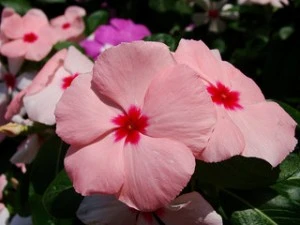Ready to start some plant housekeeping? Want to spruce up your garden and keep your plants neat and blooming? If so, grab your shears! Today’s post is all about “deadheading”! Below we have put together why to deadhead and how-to deadheading your plants!
Why should I “deadhead” my plants? Why is it important?
The phrase “deadheading plants” refers to the removal of dead or spent flowers and stocks. The reason for deadheading is to help your plant with new growth. It’s important to begin deadheading towards the end of summer and beginning of fall.
How do I “deadhead” my plants?
 Each plant is different and when it comes to deadheading there are a few techniques to use. In general, it is difficult to harm a perennial when deadheading but to stay on the safe side, follow these tips!
Each plant is different and when it comes to deadheading there are a few techniques to use. In general, it is difficult to harm a perennial when deadheading but to stay on the safe side, follow these tips!
- Snip Away! Use hand pruners or sharp scissors to snip away unhealthy or spent flowers. This will help with new growth! Suggested flowers to snip: phlox, peony, aster, coneflower, coreopsis, hosta, zinnia, lily, and Rudbeckia.
- Break-off : Breaking off dying daylilies will add to the plant’s appearance and will help with the overall flower productivity.
- Pinch versus cutting or snipping: Pinch off old blooms and it will give new buds room to grow! You can deadhead without gardening tools! Pinch vs. cut impatiens, marigold, pansy, petunia, viola, dianthus, poppy, cosmos, and columbine.
If you have questions about deadheading your plants, don’t hesitate to contact us. Check out our Facebook, Twitter, and Pinterest for daily gardening tips, tricks, and photos.



Comments (0)
Thanks for your comment!
Thanks for your feedback! Your comments have been successfully submitted! Please note, all comments require admin approval prior to display.
Error submitting comment!
There is a problem with your comment, please see below and try again.